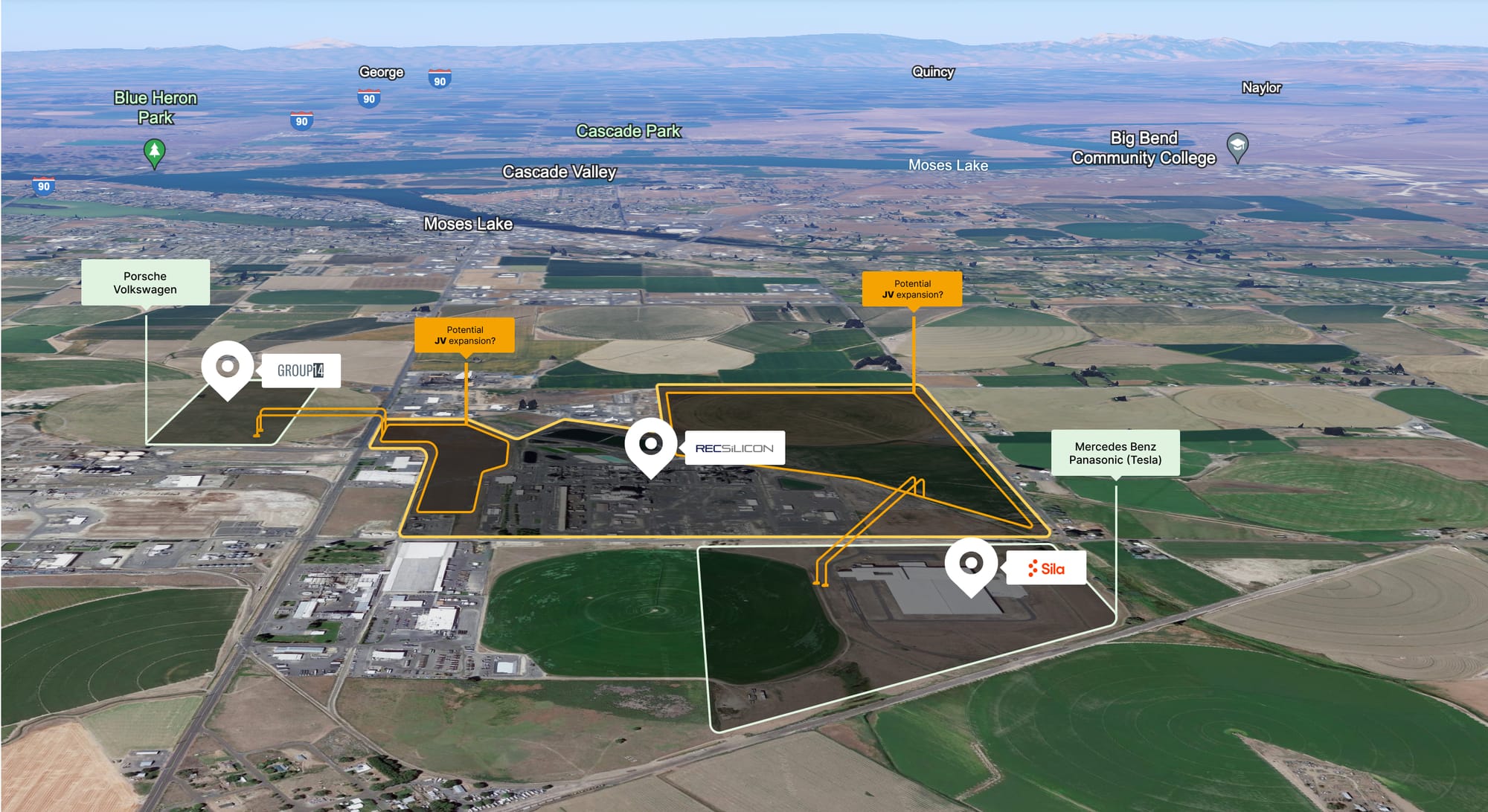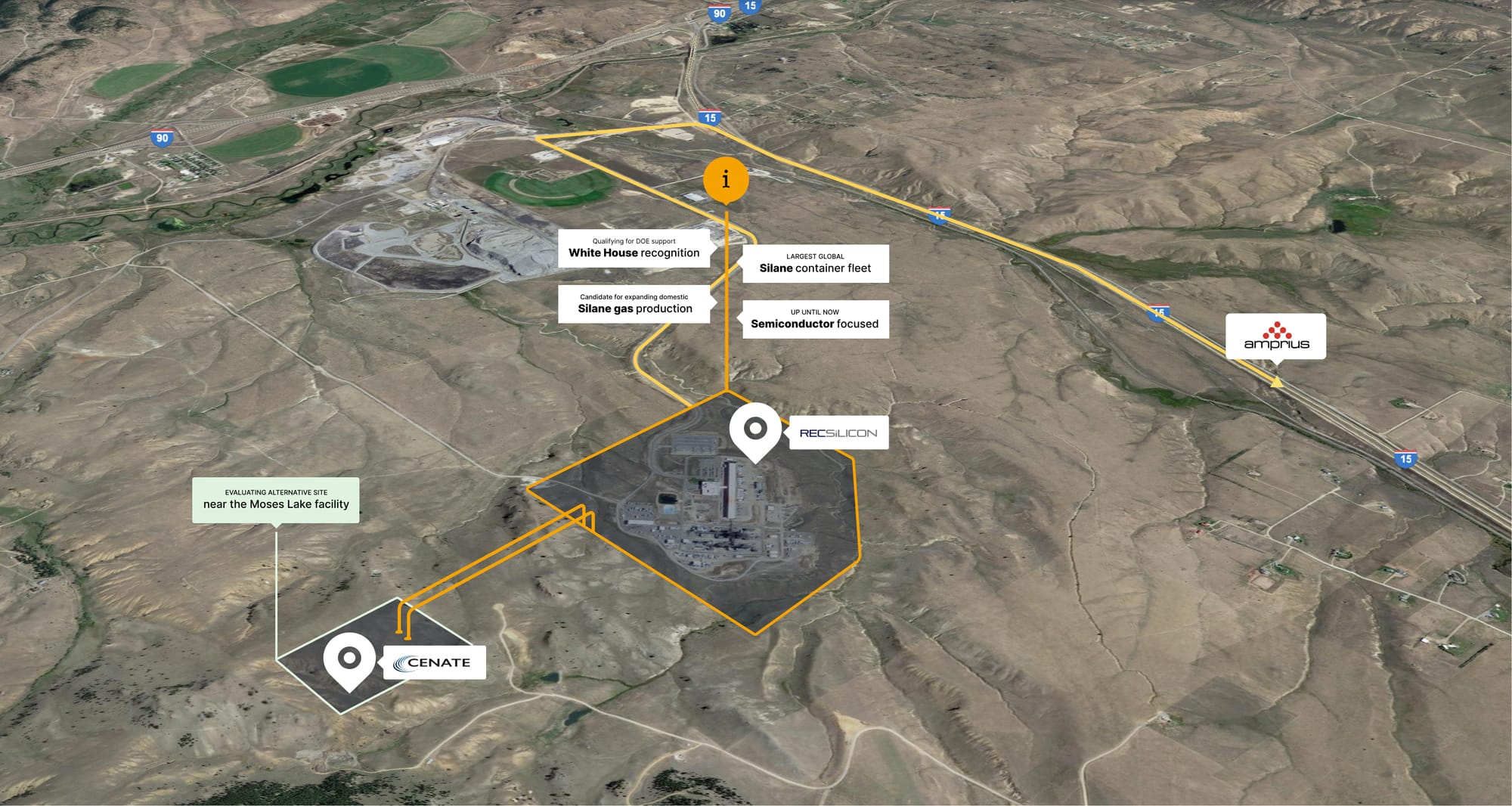Plants
Moses Lake, Washington
Moses Lake, Washington, home to REC Silicons largest plant

Governor Jay Inslee of Washington has highlighted the state, and specifically Moses Lake, as being at the forefront of the clean technology revolution. The groundbreaking of Sila Nanotechnologies’ factory in Moses Lake, for instance, is seen as a vital step in developing next-generation battery technology for electric vehicles. Inslee's support for developing the electric car industry as a means to combat climate change and create industrial jobs has played a role in attracting these companies to the area.
The state government has been actively involved in ensuring that infrastructure developments, like electric transmission utilities and housing construction, keep pace with the economic growth in Moses Lake.
Butte, Montana
Butte, Montana, home to REC Silicon`s second plant

REC Silicon leads in global distribution with the world's largest fleet of silane containers, from small cylinders to 40-foot modules. This enables safe, efficient transport of silane gas, essential for silicon anodes and other silicon products, underlining their industry superiority in safety, quality, and logistics.